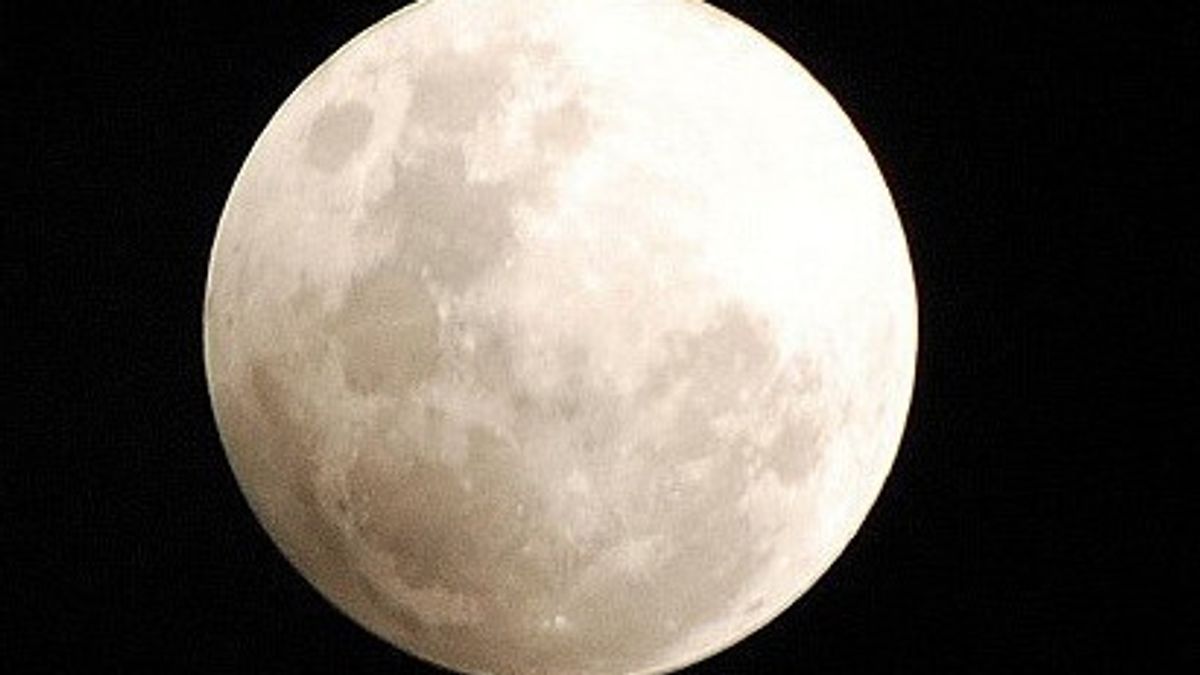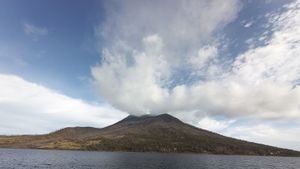
JAKARTA - The year 2020 begins with the phenomenon of a penumbra lunar eclipse which is expected to occur on Saturday, January 11, early morning. A lunar eclipse can only occur during a full moon. However, a penumbra lunar eclipse is different from a total lunar eclipse.
A penumbra lunar eclipse means that the moon only passes through the shadow region of the earth's penumbra. The shadow of the penumbra was faint. Unlike the total lunar eclipse that passes through the earth's umbra shadow or the core shadow which is very dark, the penumbra lunar eclipse will be in the lighter part of the penumbra.
During a total lunar eclipse, the changes are even more dramatic as the entire moon appears dark red. The eclipse will last about four hours.
This penumbra lunar eclipse will be visible to those in Asia, Australia, Europe and Africa. This eclipse cannot be witnessed in most of the Americas and the eastern Pacific Ocean.
Quoted from BMKG, Friday 10 January 2020, in western Indonesia, the lunar eclipse occurred on Saturday 11 January 2020 at 00.05 WIB. The eclipse will peak at 2:10 a.m. and end at 4:14 a.m. WIB.
Who saw the #gerhana sun ring yesterday? In January 2020 you will see an eclipse, but this time it is a penumbra lunar eclipse. Precisely on January 11, 2020. pic.twitter.com/7iewkF2q4y
- BMKG (@infoBMKG) January 8, 2020
This penumbra lunar eclipse is the 16th member of 71 members in the Saros 144 series. The previous lunar eclipse associated with this eclipse is known to have occurred on December 30, 2001. The upcoming lunar eclipse associated with this lunar eclipse is the penumbra lunar eclipse. that happened on January 21, 2038.
Indonesia last experienced an eclipse on December 26, 2019. At that time, the phenomenon that occurred was the Ring Solar Eclipse. This phenomenon, which is quite rare, can only be observed again in the next 1 or two years. In 2020 alone, it is estimated that there will be 6 eclipses, namely 2 solar eclipses and 4 lunar eclipses.
Meanwhile, Head of the Institute of Aviation and Space (LAPAN) Thomas Djamluddin said that the lunar eclipse of the penumbra raises the possibility of tides that can cause tidal flooding.
The tides are caused by the gravitational influence of the sun and moon. The moon's gravity can cause full moon tides when the Earth, moon and sun are in a straight line creating high tides and low tides. The incident occurred when there was a new moon and full moon.
The penumbra lunar eclipse which will occur on January 11 will also affect tides. The Meteorology, Climatology and Geophysics Agency (BMKG) predicts that the maximum high tide conditions in Jakarta Bay will occur in the period 9-12 January 2020.
The maximum height that the high tide can reach can reach 0.6 meters which has the potential to hamper the flow of river water into the sea in Jakarta Bay.
The English, Chinese, Japanese, Arabic, and French versions are automatically generated by the AI. So there may still be inaccuracies in translating, please always see Indonesian as our main language. (system supported by DigitalSiber.id)







